A deep dive into whether or not rice is considered to be okay for consumption on the paleo diet.
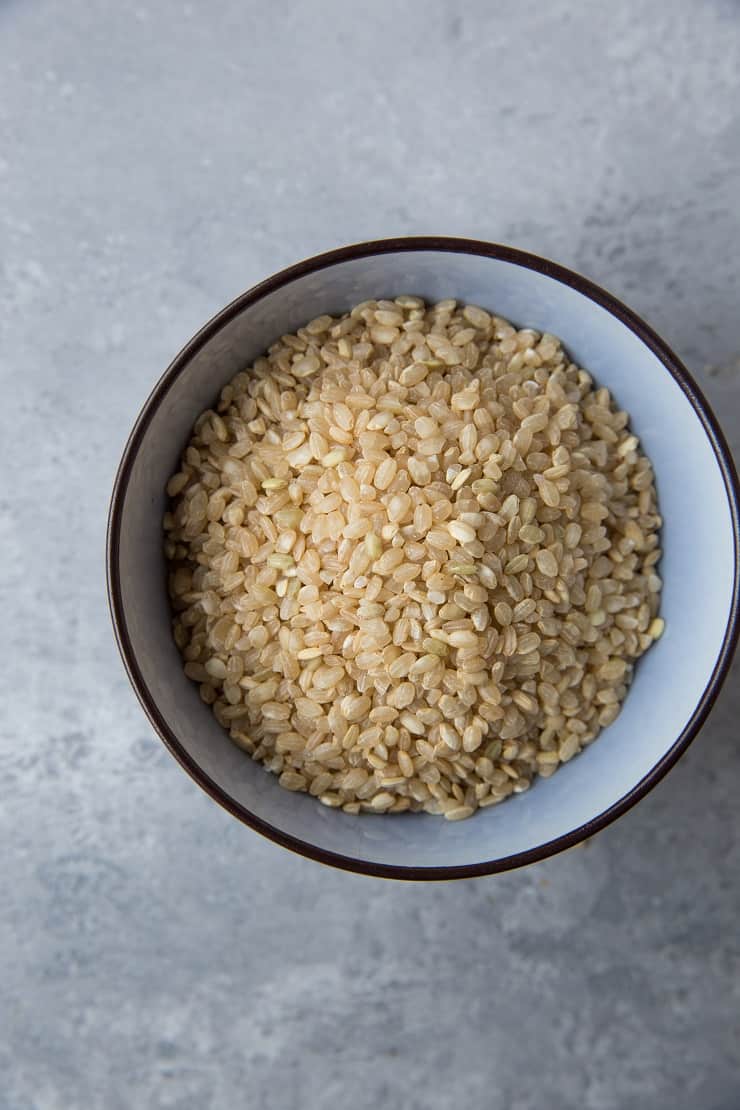
I wanted to take a moment to address a topic that can generate some confusion in the paleo community: rice.
Is it paleo?
If it isn’t paleo, is it still okay to eat?
Is white rice okay?
Should I stay away from brown rice?
Will rice raise my blood sugar or mess with my gut health?
All great questions.
The answer to all of the above is: It depends on who you are.
Is Rice Paleo?
Technically, all grains are off the table when it comes to paleo, particularly gluten-containing grains. Rice is, indeed, a grain, though it contains no gluten. Depending on the person, it can be processed easily without issue.
Some paleo purists say no grains, no way, no how. Period, end.
Some paleo folks say white rice is okay because it provides straight glucose for your body, (which your body needs for fuel provided you aren’t keto); however, you should stay away from brown rice because the whole grain contains phytates, lectins, and arsenic which can cause digestive unrest.
…And some folks say, HEY, any form of rice is okay. We’ve been cultivating it for over 3,500 years, which means our ancestors ate it, and the paleo diet is all about ancestral eating, right?
If rice has been a major part of our diet for thousands of years, our systems have adapted to consume it. But does that mean we should still eat it? And if so, who is best suited for rice consumption?
I want to point to an article Mark Sisson wrote way back in 2010 stating that, “Rice is a grain, yes, but it’s not the same as wheat, barley, oats, or corn. Avoiding grains as a general rule is good for your health, and that goes for rice, but be realistic. A bit of white rice with a restaurant meal is not going to kill you (SOURCE).”
So let’s take this step by step and have a thorough conversation about what rice does to our body so that you can determine whether or not rice is right for you.
White Rice v. Brown Rice:
First, let’s discuss the difference between white rice and whole grain rice (or brown rice).
White Rice
White rice is processed to remove the hull, which contains the protein and fiber – it is the part of the grain that allows it to reproduce. Essentially, white rice is pure glucose.
For athletes, white rice is a food for refueling and repairing. For those who don’t exercise regularly and/or are prediabetic or diabetic, white rice should be avoided. White rice does not contain phytates or lectins (read more later on about phytates and lectins).
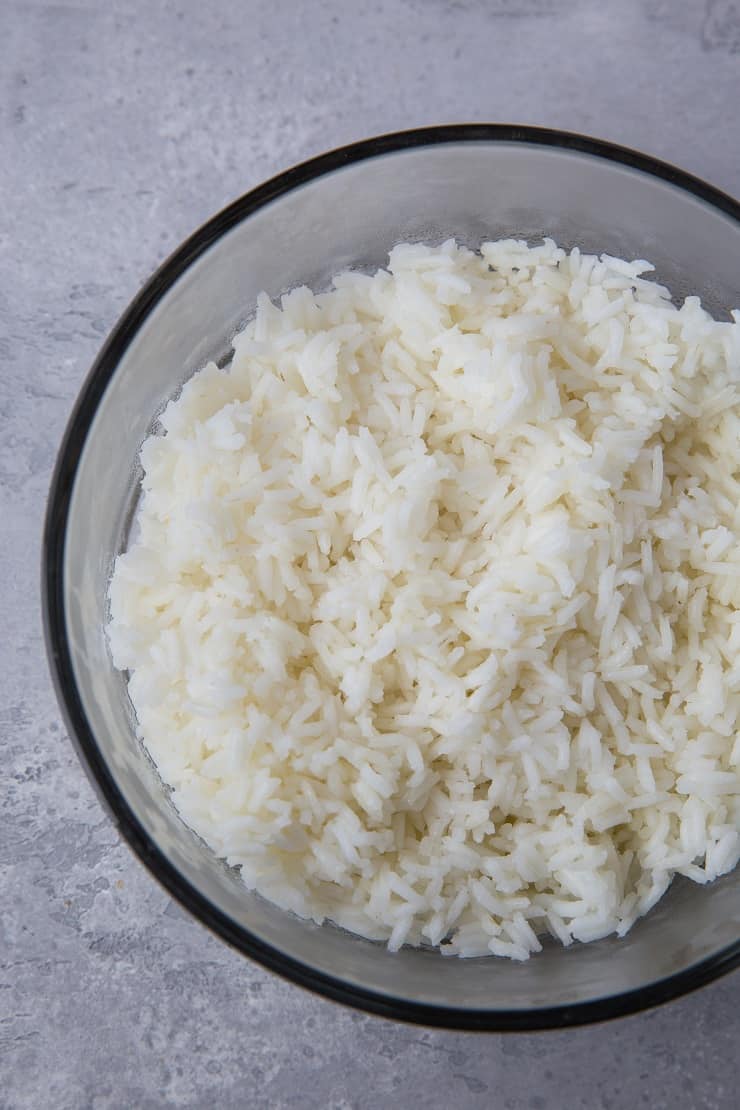
White rice can be the saving grace for those who are sensitive to fruit, sugar, or other forms of carbohydrate. Typically, people who have gut disorders such as IBS fare well with white rice because it doesn’t contain fiber. Often those with digestive issues are sensitive to the amount of fiber they consume.
In essence, white rice provides a quick and easy to digest form of fuel, which is crucial when your body is not adapted to burn fat for fuel (i.e. when you aren’t on the keto diet).
Brown Rice
Brown rice is a whole grain, which contains its bran (or hull). Unfortunately, brown rice also contains phytates, lectins and arsenic, which are stored in the bran.
Phytates act as a defense mechanism for grains and nuts to ensure survival. Essentially, phytates make the grain indigestible so that when the animal poops it out, it can still root in the ground and grow. Brown rice also contains lectins, which (just like phytates) bind to vitamins and minerals and prohibit them from being absorbed by the body.
While whole grains are great in theory, the fact that they contain phytates and lectins make them difficult to digest and also act as an anti-nutrient to the food you eat.
To mitigate some of the digestive issue, you can buy sprouted brown rice from the store, or sprout it yourself. The sprouting process helps break down the phytates and lectins and also unlocks the nutrients so that your body can absorb them and put them to use; however, there are still a small amount of phytates and lectins remaining.
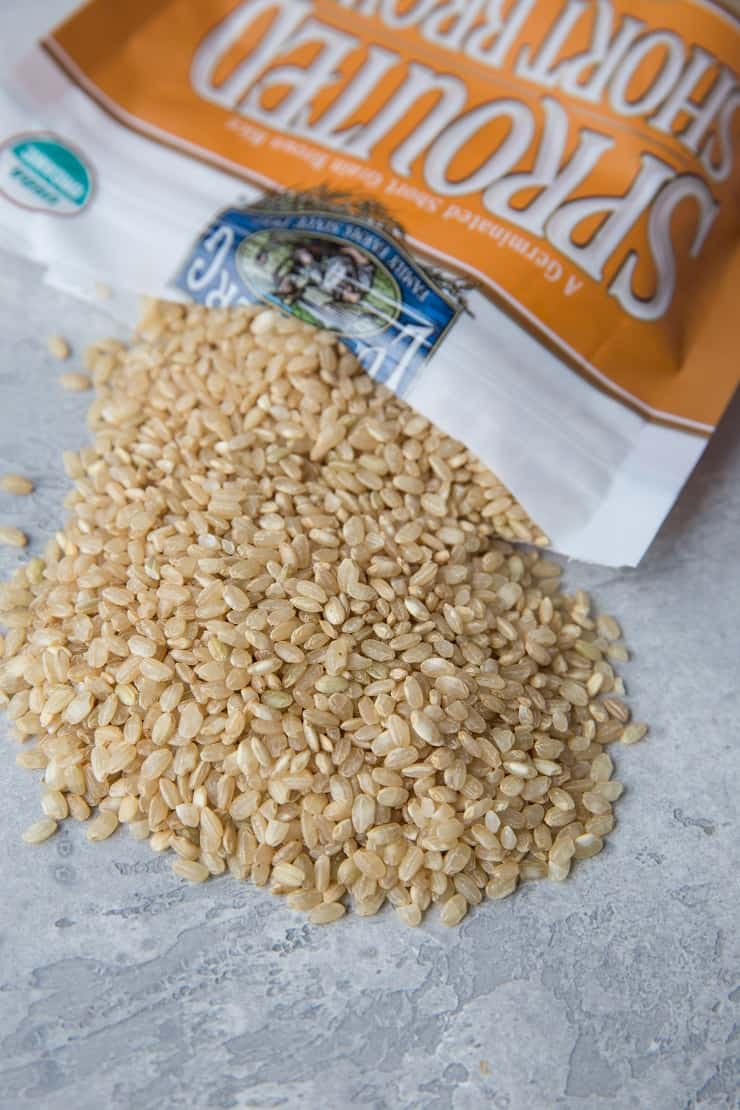
If you like the concept of eating whole grains, just be sure you choose sprouted brown rice to protect your gut lining from irritation and inflammation, and to ensure you’re actually taking in the nutrients locked away in the grain.
Let’s Talk Carbs & Blood Sugar:
I know. Everyone’s favorite topic.
As a whole, paleo is not a low-carb diet.
There are no restrictions placed on how many grams of carbs you should eat per day; however, one of the foundational principles of the paleo diet is it is meant to be low-inflammatory (hence the reason why all inflammatory food groups are cut out).
Because inflammation is a consideration, the recommended carb sources on the paleo diet are fruit (in moderation), root vegetables (beets, sweet potatoes, parsnips, carrots, turnips, etc.) and winter squash (butternut, acorn, kabocha, spaghetti squash).
Do grains cause inflammation? It depends on the person and on the amount.
Highly processed grains (think: white flour) cause inflammation, whereas whole grains are fine for some people. Gluten-containing grains tend to be very pro inflammatory, whereas rice doesn’t tend to elicit the same level of inflammation.
That said, folks who are insulin resistant (pre-diabetic or have diabetes) should avoid highly starchy foods like rice and potatoes. For those whose blood sugar remains fairly stable after eating rice, it is fine to eat in moderation.
How can you determine if your blood sugar is sensitive to rice? In Robb Wolf’s book, Wired to Eat, he provides detailed instructions on how to determine if your blood sugar is negatively impacted by various forms of carbohydrate.
You’ll need to purchase a blood glucose monitor and eat 50 grams of rice (your choice: white or brown…you should test both. 50 grams is about ½ cup) first thing in the morning in a fasted state.
Test your blood sugar two hours later. Remember, don’t eat anything else, and don’t work out. If your blood sugar is within normal range (70 – 140), you’re probably fine to eat rice in moderation.
If your blood sugar is higher than 140, your blood sugar could be sensitive to it and you should therefore avoid consuming it regularly.
Gut Health
One of the side effects of eating paleo is often a great deal of gut healing. Inflammation decreases, which allows your body to heal. Your bad bacteria start to die off, your intestinal lining repairs itself, your digestion improves, and therefore many facets of your health are positively affected.
Big picture: your body can tolerate a certain amount of carbohydrate and/or inflammatory foods before it experiences inflammation. Once it hits a certain tolerance level (which is unique to each individual), inflammation ensues, and the blood sugar is raised.
Chronic inflammation and high blood sugar lead to a whole slew of health conditions, which is why figuring out your personal carb tolerance is crucial.
Does it matter what carbohydrates you eat? YES! Some of us have intolerances to various forms of carbs (gluten-containing grains, potatoes, sugar, etc), so obviously you don’t want to choose the forms of carbs that mess with your system.
BUT, some folks lucked out in the genetic realm and can tolerate most or any form of carbohydrate and therefore must simply be cognizant of the amount of intake.
Again, how rice comes into play depends entirely on the person. White rice is a super easy form of glucose to digest for those who have a difficult time digesting other forms of carbohydrate, like fructose or sucrose. I fall into this category.
Brown rice provides an excellent source of fiber for those who don’t eat a large amount of vegetables, and as long as your digestive system isn’t hating it, it can be a very useful tool to your personal nutrition. On the flipside, those who have digestive disorders, like IBS or IBD must avoid high amounts of fiber in order to avoid triggering symptoms.
So in essence, if you have digestive issues and you can tolerate rice, white rice would be the way to go.
Summary: more and more, it seems most individuals find an inflammatory response with specific food groups, which means most of us do need to pay attention to the type and amount of carbohydrate we consume each day.
What Concerns You About Rice?
Are you worried about eating rice? If so, why? Is it the carbohydrate content? The lectins and phytates? Or is it due to intolerance?
If your biggest concern is the carbohydrate content, I would implore you to track your macros.
You may find the whole sweet potato, paleo muffin, or butternut squash you’re consuming every day is richer in carbs than you thought. This isn’t to encourage you to switch out your potatoes or butternut squash for rice, it is to encourage you to stay objective.
If you’re worried about the lectins and phytates in rice, understandable. If this is your hang up, make sure you’re also not consuming all other grains, nuts, seeds, beans, legumes, potatoes, tomatoes, eggplants, bell peppers, and chilis.
Nuts and nightshades are extremely high in phytates and lectins, yet they are paleo friendly. Just food for thought.
My Take On Rice
The way I look at inflammation in my own diet is as an aggregate.
I know the foods that inflame me the fastest are gluten-containing grains, sugar, alcohol, and dairy (in that order).
Does that mean I absolutely never eat those foods? I never eat gluten. But I do eat rice, sugar, and dairy on rare occasions.
When I do eat them, I am cognizant of the amount I eat so that I don’t cause an inflammatory response (for me, inflammation leads to IBS symptoms).

I exercise daily (and pretty intensely), which means I need more carbohydrate than say a keto diet would call for. I used to have some gnarly gut issues, during which time my body tolerated very few carbs other than white rice.
When I had an IBS flare, I went for white rice, because it contains no fiber.
Lowering my fiber intake while I was experiencing a flare helped me get my system back in order quicker.
It may sound counterintuitive since everyone tells you that you need fiber to poop, but fiber feeds bacteria (both good and bad). So those with chronic gut conditions should avoid high amounts of fiber (particularly raw vegetables) when experiencing GI troubles.
Conclusion
My unsolicited opinion is that rice is great for some, and not great for others. The only person who can make that delineation is you.
For happy guts and overall health, white rice and sprouted brown rice are the two best options.
If you’re concerned about phytates and lectins, limit your intake of all grains, legumes, nuts, and nightshades (tomatoes, potatoes, eggplant, bell peppers).
I recommend testing your blood sugar after eating carbohydrate-rich foods regardless of the source. Snag a blood glucose monitor and see what happens after eating rice and other forms of carbs. I think it is important to know what is happening with your blood sugar in general.
Yes, be aware of what’s in the food you eat, but remember not everyone reacts negatively to all food.
Your personal genetics and gut microbiome are unique to you, so your sensitivities will be substantially different from the next person. Just avoid the foods that make you feel like do do, and pay attention to your blood sugar (and bloodwork!)
Sourcing Your Rice:
I always recommend buying organic rice.
Rice is not one of those foods that you can swing either way – it will collect pesticides, guess what pesticides do in your body?
They’re a vicious toxin so not only do they create more work for your immune system (because your body has to get rid of them), but they cause inflammation as a result.
So throw your body a bone and if you’re going to eat rice, choose organic.
Now that you have the run-down on whether or not rice is okay on a paleo diet, learn How to Cook Rice and Potatoes for Optimal Digestion!


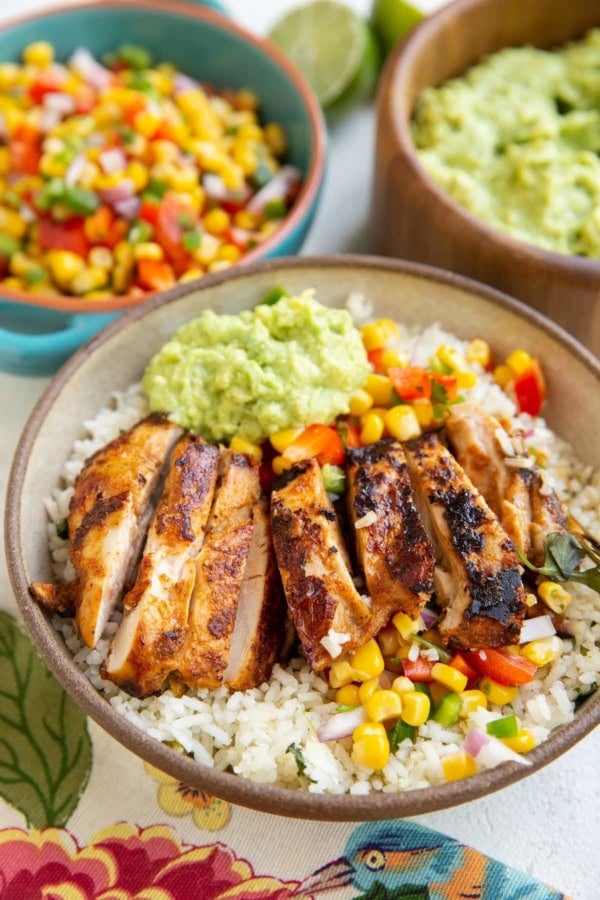
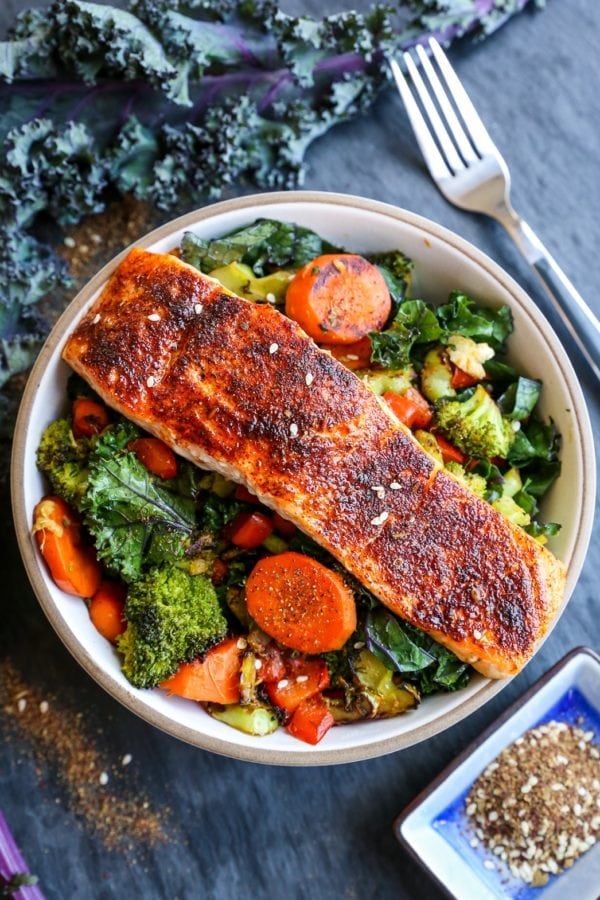
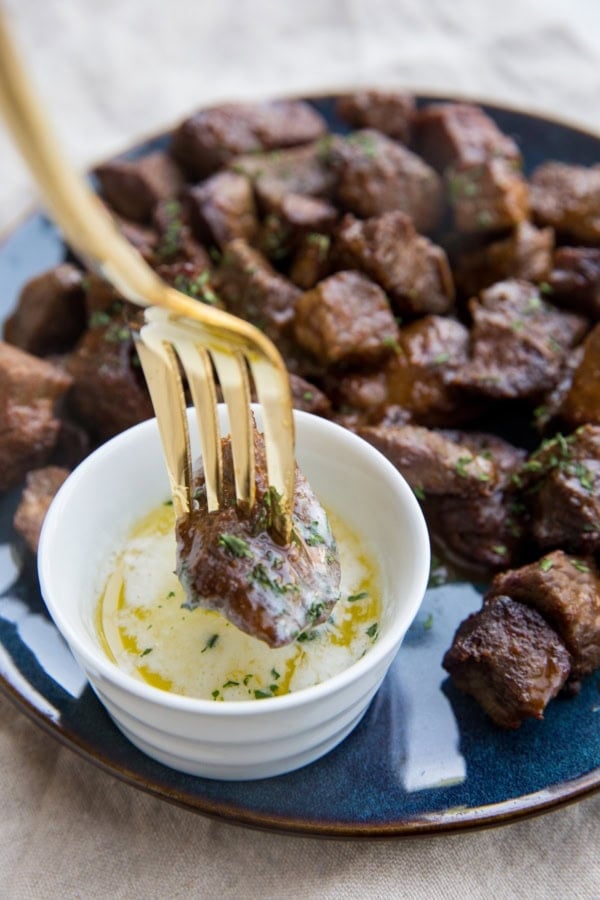









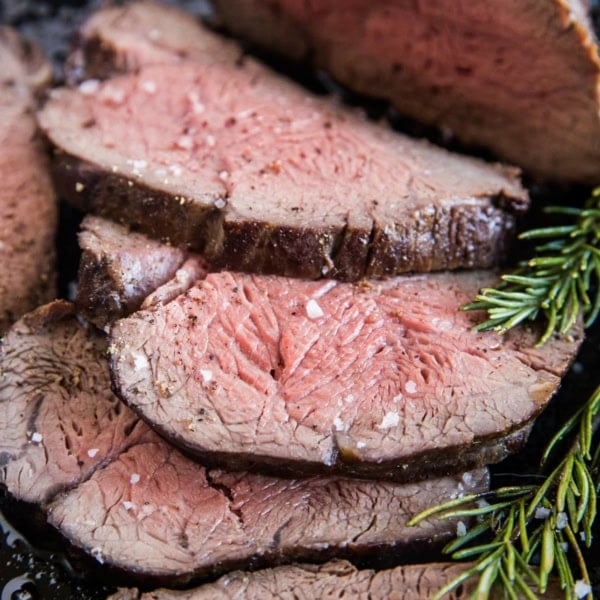
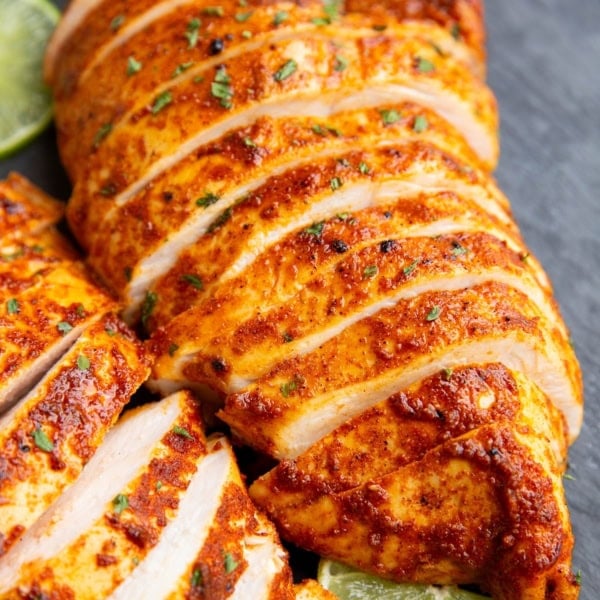
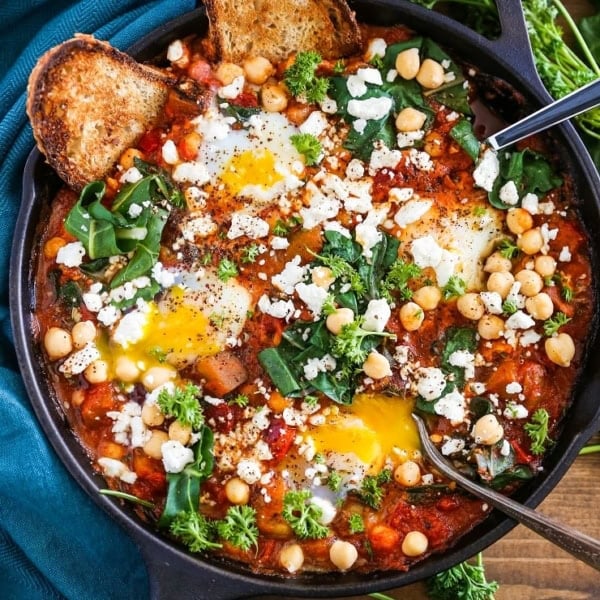
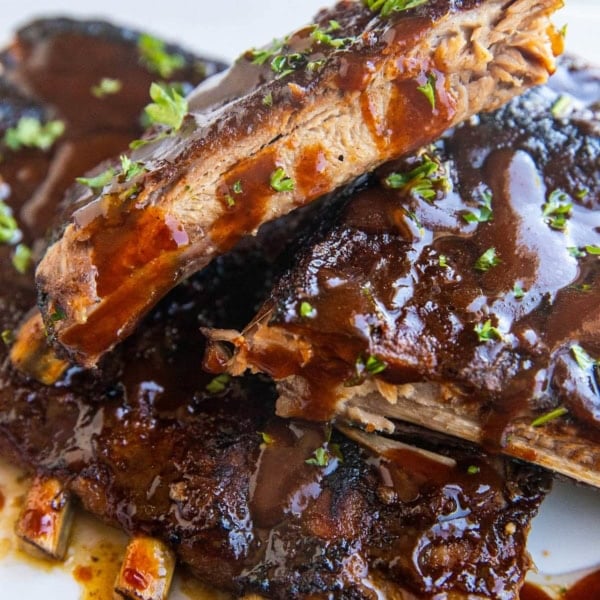
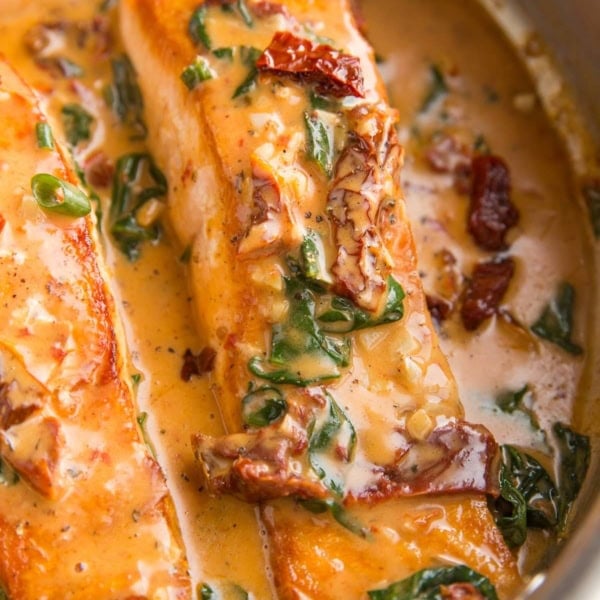

Hey Julia, l hope ur doing great, ur article is well written and it explains a lot personally on what to eat according to ur needs unlike eating foods or a diet just because someone says it worked for them, about low carb with rice l see you said 75-150 carbs is low to moderate carbs, so if someone is planning to go low carb how much grams of white/brown rice or cups of rice can one eat on with low carb? Thanks
you should increase your fat consumption a lot if you are constipated, saturated fat consumption specifically, and actually its not true than someone who do exercise needs to eat carbs at all, many athletes do well on a keto diet.
Hello I have problems eating rice itself also sweet potatoes what other carbs can I eat in the place of it?Thanks
Hi Sheila,
Depending on what you’re going for, you have a pretty huge array of options. If you can do fruit, any fruit is great. Starchy vegetables like carrots, beets, parsnips, butternut squash, pumpkin (any winter squash), etc. If you can tolerate wheat, anything containing flour works as well. Hope this helps!
Thank you so much for your insight and perspective. It’s difficult to eat these days especially when you deal with inflammation. You’ve cleared a few things up; I look forward to [slowly] introducing rice back into my diet.
Hi Jess!
My pleasure! There’s definitely a lot of debate in the health community about which foods to eat and which to avoid. In general my take is if you’re in good health (if you have good biomarkers and you’re metabolically flexible), you should be able to eat rice just fine (within reason, of course) 😉 Everyone is different and some people don’t tolerate grains well, but unless there is an underlying medical condition, rice is a very easy to digest source of carbs 😀 xoxoxo
Hi Julia, Does black glutinous rice ( so called purple rice or emperor rice) contain lectins? And does white glutinous rice contain lectins?
Is there any chicken egg that do not contain lectins?I have arthritis on one of my finger, i think is due to lectins as i do not eat peanut and bread but i eat plenty of black glutinous rice and egg.
Hi Jason,
I believe black rice contain lectins because they are still the whole grain, but white rice does not, as the grain is removed. Eggs do contain lectins as well and I’m not quite sure if anything can be done to remove them 🙂 Hope this helps!
I really recommend the channel Low Carb Down Under on YouTube – fantastic doctors and scientists with great information, I’m finding it so helpful with helping my partner who has post infection IBS. One day I hope we will have him waking up feeling better more than not!
My boyfriend and I are in the middle of a Whole30 and I’m doing some research on reintroduction. We’re learning a ton about ourselves and our nutrition, but very excited to get rice back our on plates! This article was everything I was looking for when I began my google search for what grains compliment a “mostly” Paleo diet. Thank you for going into such detail and uncovering some ideas for me to look further into as we move toward reintroduction and what works best for our bodies! This was my first visit to your blog, but I will be following now!
I’m so happy the post was helpful for you, Cristin! It can be difficult choosing a food lifestyle that sticks long-term. For me, rice is essential but some people react negatively to it. It’s funny how much variation there is in what each individual likes to digest. I hope you enjoy the Whole30 ride! Feel free to reach out if you have any questions! xo
This is an absolutely wonderful post! Thank you for going into so much detail 🙂
You’re very welcome, Katie!! Nutrition is so fascinating and we often overlook the details when focusing on an overall diet. I find I don’t tolerate so many paleo/whole30/keto-approved foods, and used to drive myself crazy trying to fit them in my diet. It’s definitely best to understand how various macro nutrients and fiber affect us individually. I appreciate the support! xoxo
RE: RICE & PASTA IN REGARDS TO THE PALEO DIET. These foods are not as nutritious as they were in our Grandparents day. So should be used as fillers in moderation or not at all if you have stomache issues . So many foods are genetically modified and lack the nutrition and vitamins one needs to be healthy. Julia I love your posts and print your recipes. Thanks and keep up the good work.
So true. Even the most nutrient-dense foods like kale and beets contain less vitamins and minerals now than they did decades ago. The key it to consistently eat a low-inflammatory whole food diet, rich in protein, healthy fat and an array of vitamins and minerals to avoid any deficiencies. What I like about white rice is while it adds zero nutritive quality other than glucose, it also doesn’t detract from your health the way gluten-containing grains do. Thanks so much for your encouragement, Roberta! xoxo 😀